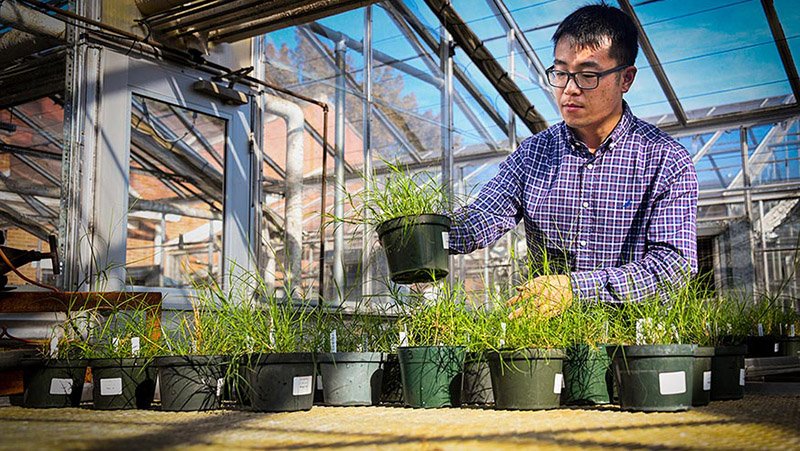
Who has not received feedback from golfers asking for a truer putting surface that is more receptive to approach shots?
Everyone can now put their hands down.
Plant breeders at Mississippi State University are developing two hybrid Bermudagrasses that they say will hold approach shots and give golfers a better line to the hole. Scientists at the Mississippi Agricultural and Forestry Experiment Station say the new cultivars, currently known as MSB-264 and MSB-285, are the first hybrid Bermudagrasses that are not related to Tifgreen.
Both cultivars exhibit a more upright leaf orientation than most other Bermudagrasses bred for use on putting greens. And both are propagated vegetatively and are sterile triploid genotypes, meaning that they do not produce seeds.
"These two grasses are adding novel genetic diversity to the Bermuda grass cultivars, especially to the ones used on putting greens," said Hongxu Dong, Ph.D., assistant professor at Mississippi State.
"This has the potential to allow truer putting and to hold golf shots better than existing ultra-dwarf Bermudagrass cultivars."
Other characteristics of both varieties include improved leaf texture, shoot density, genetic color and offseason color retention and rapid spring green-up.
MSB-264 and MSB-285 were bred from a different genetic background compared with other Bermudagrass that are related to Tifgreen. These variants are full siblings derived from a cross of two parent cultivars, Dong said.
The breeding process is a long one, and it can take a decade or more of testing before a cultivar is available commercially.
"Because the process is so long, and because you have to accumulate so much data to patent and market a grass, we have 110 to 120 grasses being evaluated for athletic fields, golf courses and home lawns," Dong said. "The breeding program is a numbers game. The more varieties you are testing, the better the chances of having some that are good enough to enter the trials and then go into production and commercialization."
Recently retired MSU turfgrass breeder Wayne Philley led the MAFES development. Both grasses are available for licensing.

